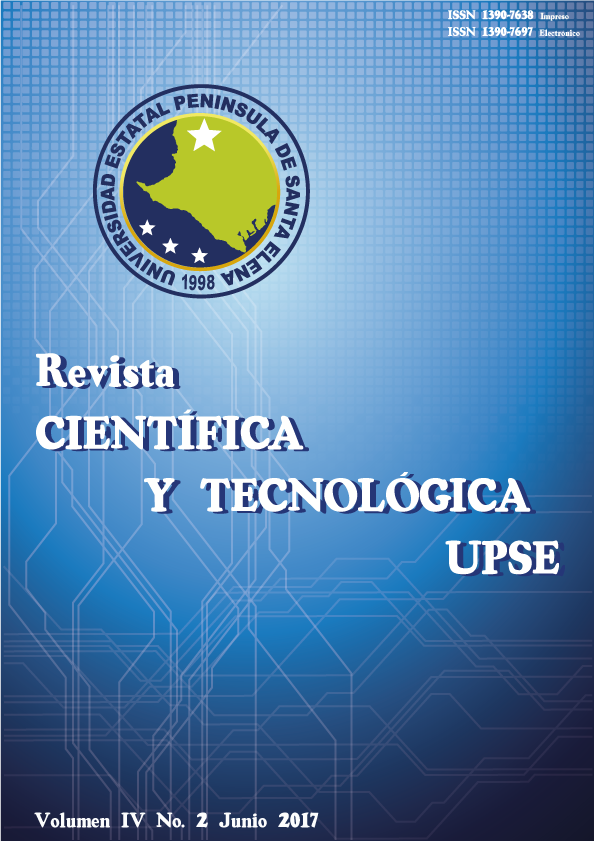Input of potable water consumption readings in EMAPAL-Azogues, through mobile devices
DOI:
https://doi.org/10.26423/rctu.v4i2.228Keywords:
Case diagram, class diagram, spinner, billing, taking readings, mobile devicesAbstract
This article is developed for the reason that EMAPAL-Azogues requires to improve the registration of the consumption of the vital liquid on the home meters of the users, through a technological application, which will provide the readers / digitizers better working conditions, allowing them the immediate updating of the data. The functionality of the application allows, thanks to the growing use of mobile communication systems and its help to the interrelation between people, companies and projects; The reader can enter via the mobile device, it can be a Smart Phone or a Tablet with Android operating system, the application linked to the database, which will enter the current meter reading in the application and automatically update the database, Considering that the estimated time to digitize the readings in the database is approximately 15 days, with the mobile application, a re-digitization is avoided and the daily reports of the readings made for the billing proces.
Downloads
References
Bandara, L. (10 de abril de 2014). Zona de Fresnel. Obtenido de Mundo Telecomunicaciones: www.mundotelecomunicaciones1.blogspot.com
http://biblioteca.epn.edu.ec/cgi-bin/koha/opac-detail.pl?biblionumber=6145
http://bibliotecas.espoch.edu.ec/cgi-bin/koha/opac-detail.pl?biblionumber=42773
Casanova, V. (28 de juniode 2012). ¿Qué es el Espectro Electromagnético? Obtenido de Astrofísica y Física: http://www.astrofisicayfisica.com
Cisco. (s.f.). Cisco Small Business 200 Series Smart Switches. Obtenido de Cisco 200 Series Switches: www.cisco.com
Commscope. (2015). Commscope. Obtenido de Sistemas de antenas: es.commscope.com
CONATEL. (2001). REGLAMENTO PARA LA PRESTACION DE SERVICIOS PORTADORES. Ecuador.
CONATEL. (2012). Plan Nacional de Frecuencias. Ecuador.
CONGRESO NACIONAL. (1992).LEY ESPECIAL DE TELECOMUNICACIONES Y SU REFORMA. Ecuador.
Couch, L. (2008). Sistemas de comunicación digitales y analógicos. México: Pearson Educación.
EMPRESA PÚBLICA MUNICIPAL DE AGUA POTABLE.(s.f.). Obtenido de http://www.emapal.gob.ec/index.php?option=com_content&view=article&id=88&Itemid=58
Gómez, P. J. (31 de enerode 2011). Análisisde desempeño del nivel. Sistemas inalámbricos y móviles.
Harvey, Gordon. (2001). Cómo se citan las fuentes. Nuer, Madrid.
http://isa.uniovi.es/docencia/SIGC/pdf/telefonia_movil.pdf
José Barceló Ordinas. (marzode 2004). Redes de computadoras. España.
Naj, N. A. (5 de juniode 2013). Attribution Non-commercial. Recuperado el 2 de marzode 2014, de es.scribd.com: http://es.scribd.com/doc/145791290/MarcoTeorico#scribd
Secretaría Nacional de Planificación y Desarrollo (2013), Plan Nacional del Buen Vivir 2013 -2017, Quito.
Umberto. (2001). Cómo se hace una TESIS. Técnicas y procedimientos de estudio, investigación y escritura. Gedisa, Barcelona.
Downloads
Published
Issue
Section
License
El titular de los derechos de autor de la obra, otorga derechos de uso a los lectores mediante la licencia Creative Commons Atribución-NoComercial-CompartirIgual 4.0 Internacional. Esto permite el acceso gratuito inmediato a la obra y permite a cualquier usuario leer, descargar, copiar, distribuir, imprimir, buscar o vincular a los textos completos de los artículos, rastrearlos para su indexación, pasarlos como datos al software o usarlos para cualquier otro propósito legal.
Cuando la obra es aprobada y aceptada para su publicación, los autores conservan los derechos de autor sin restricciones, cediendo únicamente los derechos de reproducción, distribución para su explotación en formato de papel, así como en cualquier otro soporte magnético, óptico y digital.












